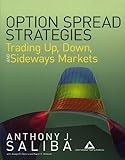With the announcement that QE2 will not end early, the euphoria in the markets seems to be setting us up for a summer market correction followed by the announcement of QE3. I remember May 5, 2010 quite well and I hope you do too.
Hedging equity positions can be fairly expensive over time, but I believe there are very attractive ways to mitigate that cost. The simplest method is to purchase a put option as a floor against sudden equity downdrafts. The problem with puts is that they are very expensive insurance policies. The natural extension of a put position is a put-spread. A put spread simply buys an option near the money and sells an option further out of the money so you could buy a put at 100 and sell a put at 90. With the 100-90 long put spread position, you have purchased protection against a 10% drop in the markets at a cost that is often dramatically less than the lone ATM put position. The reason that put spreads usually look attractive is because there is usually a steep skew in the option pricing in which options with lower strike prices are priced more richly than options with higher strike prices. By entering into a put spread, you effectively purchase an option at a lower implied volatility and sell an option at a higher implied volatility.
Simple Put Spread
If you focus on the June expiry SPY options (white line above), then you can see that a put option ATM (135) trades at about a 14.25% implied volatility while an option that is 7% out of the money (126 strike) trades at about a 19% implied volatility. If you purchase a 135-126 put spread, then you are purchasing at 14.25% implied vol and selling at 18% implied volatility. This simple strategy reduces the cost of the hedge from -2.1% of the underlying to -1.5%. Not very exciting, but progress.
Bearish Diagonal Put Spread
If you look at the white line versus the yellow line, you can see that September volatility is trading at quite a bit higher implied volatility than June. If you are willing to sell longer dated options in a mismatched calendar put spread strategy, then you could buy that same 135 June put option and sell the September 126 at a 19.6% volatility. This would reverse your hedge cost from -2.1% to +.1%. You actually make money, but your risk is that the market does nothing between now and June and then falls quickly thereafter.
I like the (bearish/reverse?) diagonal put spread strategy for a number of reasons:
- I am purchasing implied volatility at much lower levels by buying the short dated put, making the short dated downside protection fairly inexpensive.
- I am selling implied volatility that not only takes advantage of the steep skew, but also takes advantage of the fact that longer dated options are trading at higher implied volatilities than short dated options.
- The position allows me to view the short dated long position independently from the long-dated position with more comfort. If I simply bought a put spread, then I would most likely close out both positions if the market tanked. If the market tanks with the calendar spread, then I am more likely to sell out of my long put position at a profit and let my written options with a few months till expiration a bit of breathing room. This especially applies if I write the longer dated options at strikes in which I am comfortable buying and owning more of the underlying stock/index over a long time horizon.
- As the longer dated written option ages (all else equal) the implied volatility should drop to the shorter dated implied volatility, thereby you are “rolling down the vol curve”.
I hope this brings some new ideas to your option trading strategies. My all-time favorite hedge is one step removed from here – a bearish ratio diagonal put spread in which I buy short dated put options and sell a larger number of far out of the money longer dated put options….
Option Spread Strategies: Trading Up, Down, and Sideways Markets
Spread trading—trading complex, multi-leg structures–is the new frontier for the individual options trader. This book covers spread strategies, both of the limited-risk and unlimited-risk varieties, and how and when to use them.
All eight of the multi-leg strategies are here: the covered-write, verticals, collars and reverse-collars, straddles and strangles, butterflies, calendar spreads, ratio spreads, and backspreads. Vocabulary, exercises and quizzes are included throughout the book to reinforce lessons.
Saliba, Corona, and Johnson are the authors of Option Strategies for Directionless Markets.





